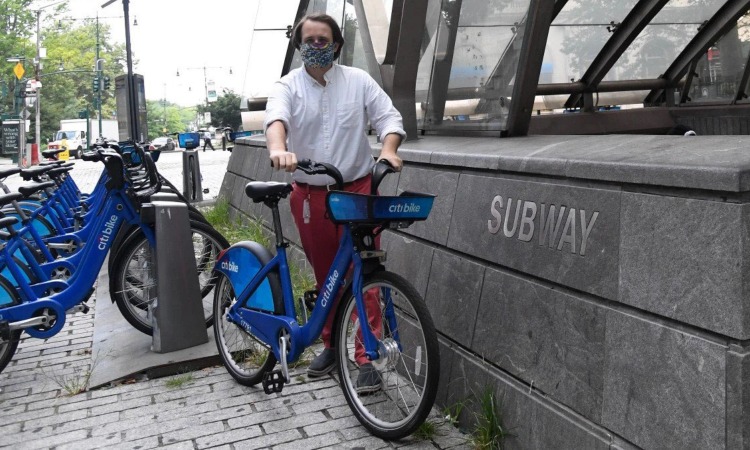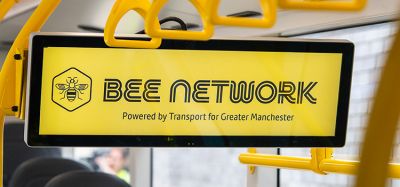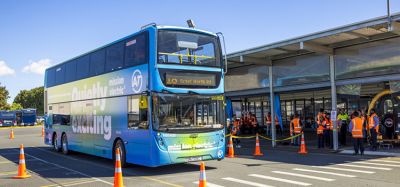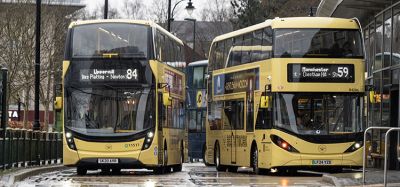MTA launches strategic plan to enhance active travel access to mass transit
- Like
- Digg
- Del
- Tumblr
- VKontakte
- Buffer
- Love This
- Odnoklassniki
- Meneame
- Blogger
- Amazon
- Yahoo Mail
- Gmail
- AOL
- Newsvine
- HackerNews
- Evernote
- MySpace
- Mail.ru
- Viadeo
- Line
- Comments
- Yummly
- SMS
- Viber
- Telegram
- Subscribe
- Skype
- Facebook Messenger
- Kakao
- LiveJournal
- Yammer
- Edgar
- Fintel
- Mix
- Instapaper
- Copy Link
Posted: 30 May 2022 | Intelligent Transport | No comments yet
The Strategic Action Plan will aim to increase transit equity by improving bike, pedestrian and micro-mobility access to MTA services – making multimodal transportation more convenient.


Credit: Metropolitan Transportation Authority
Metropolitan Transportation Authority (MTA) Chair and CEO Janno Lieber has announced that the MTA will create a strategic action plan to enhance bicycle, pedestrian and micro-mobility access to MTA facilities and services.
The plan, to be released in 2022, will redouble MTA’s commitment to creating equitable access to public transit and supporting sustainable transportation modes. The authority is launching this plan in accordance with state legislation signed into law in 2021 by Governor Kathy Hochul.
Through the strategic action plan, MTA will:
- Improve bicycle, pedestrian and micro-mobility access to subway stations and bus stops
- Improve access at Long Island Rail Road and Metro-North Railroad stations
- Integrate trip planning and payments with bike-sharing and other micro-mobility services like e-scooters
- Strengthen co-ordination with municipalities
- Improve pedestrian and bicycle access to and on MTA bridges.
These improvements will support the growth of sustainable transportation modes and ensure MTA remains focused on enhancements that will enable cyclists, pedestrians and micro-mobility users to better use its transportation network.
“We want to improve customer access to our environmentally friendly MTA services, however they get to their train or bus,” said MTA Chair and CEO Janno Lieber. “As a cyclist myself, I know that biking can be the perfect complement to mass transit. This plan improves access to our services through cycling, walking and micro-mobility, and will help bring riders back and reduce our carbon footprint.”
“As more and more people are walking and cycling to get around – particularly in the face of our growing climate crisis – improving access to the MTA network for bicyclists and pedestrians is more important than ever,” said Lisa Daglian, Executive Director of the Permanent Citizens Advisory Committee to the MTA. “Making it easier to get to and from stations without a car will help increase ridership around the system, while cutting down on congestion and emissions. Improving connectivity by adding missing links to bridges, either by finishing walkways and bike paths or adding bike racks on additional bus routes, will allow more people to get where they’re going under their own power or take transit.”
“Reliable mass transit is only as good as its surrounding infrastructure. With cycling booming and the city continuing to grow, the DOT is excited to partner with the MTA to better support healthy, environmentally friendly first- and last-mile trips,” said New York City Department of Transportation Commissioner Ydanis Rodriguez. “There are lots of great opportunities to improve conditions for pedestrians and cyclists transferring to buses and trains and we are working hand in hand improve transit access.”
MTA has hired Sam Schwartz Engineering to support the development of the plan. The scope of work for the consultant includes evaluating existing conditions and trends in bicycle, pedestrian and micro-mobility as related to MTA services and facilities, aligning the plan to global best practices, and supporting MTA-led stakeholder engagement. The work will culminate in producing the final plan later in 2022.
The is part of a series of steps MTA has already taken to increase active travel access, including enhanced bicycle access to commuter rail, bus bicycle racks, improved bicycle and pedestrian access on bridges and secure bike storage at Grand Central Terminal.
MTA is also planning to work with stakeholders in the commuter rail territory to implement 10 pilot programmes, including bicycle, pedestrian and micro-mobility station access improvements. The action plan will outline goals, processes and policies for creating an integrated transportation network and will consider local, national and international best practices.
Related topics
Accessibility, Air Quality, Infrastructure & Urban Planning, Mobility Services, Multimodality, Passenger Experience, Public Transport, Sustainable Urban Transport
Related modes
Bikes & Scooters, Bus & Coach
Related cities
New York
Related countries
United States
Related organisations
Long Island Rail Road (LIRR), Metropolitan Transportation Authority (MTA), MTA Metro-North Railroad
Related people
Janno Lieber, Kathy Hochul, Lisa Daglian, Ydanis Rodriguez








